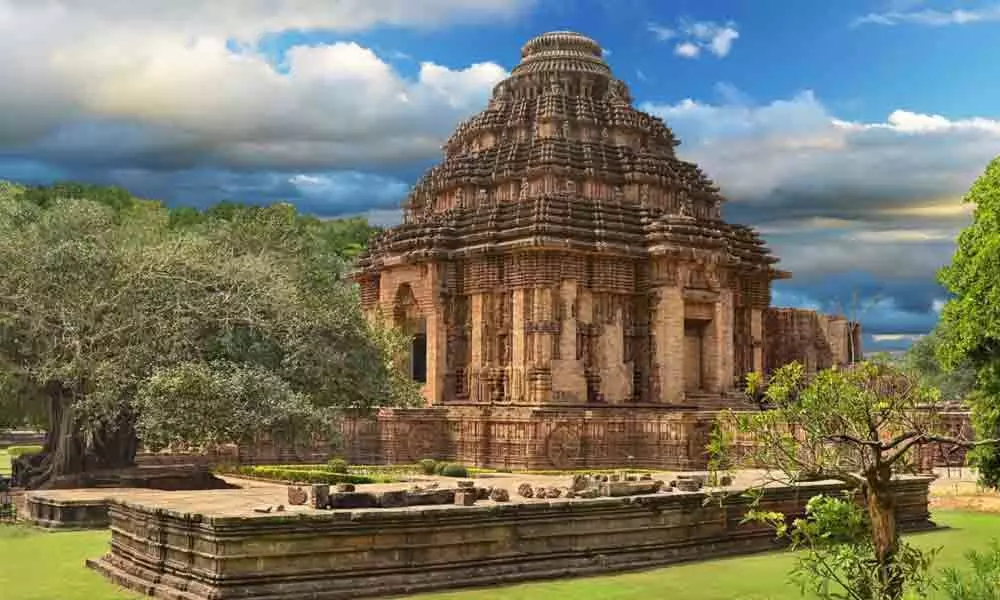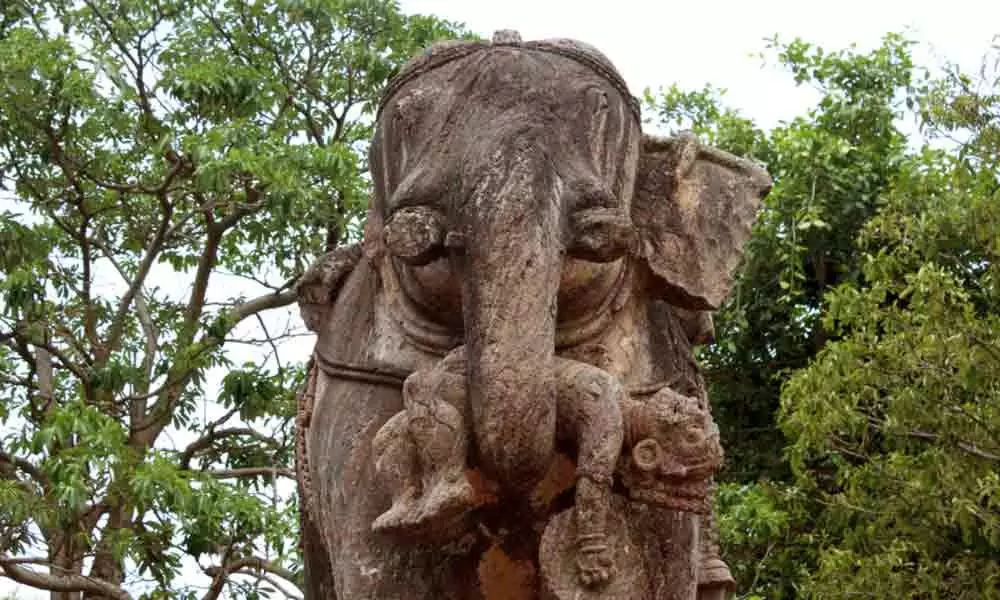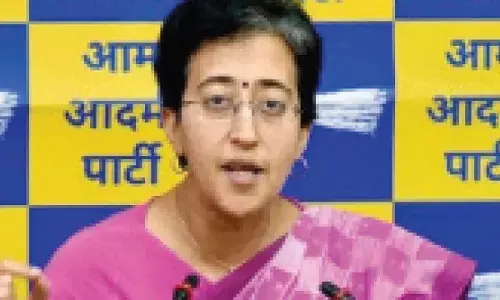A poem in stone
Ancient Indian epics reverentially acknowledge the sun as the ‘eye of the universe’, the soul of all existence, the origin of life, the goal of yogis and a symbol of freedom and spiritual emancipation.
Ancient Indian epics reverentially acknowledge the sun as the 'eye of the universe', the soul of all existence, the origin of life, the goal of yogis and a symbol of freedom and spiritual emancipation. The sun-god has been linked to perception and inner knowledge and obeisance to the sun is an inherent part of both rituals and asanas where 'Surya namaskars' bring health, wealth and prosperity. The Ramayana mentions how Rama deluded by personal loss on the war field gains strength from reciting 'Aditya Hrudayam' the text invoking the sun god the knowledge of which is given to him by sage Agastya to regain strength and confidence to win the war.
The 12 names of Surya are important and chanted while completing the 12 steps in each namaskar and we see this number mentioned many times at the magnificent temple to the sun god at Konark. Situated in the eastern state of Odisha 60 kms from Bhubaneshwar one can see the rising and ebbing waves of the Bay of Bengal framed by silver sands along the road that goes all the way from here to Puri, which has the famed Jagannath temple.
"There are 12 wheels (sundials) on each side of the chariot, the temple took 12 years to complete, the king who undertook this construction had 12 wives, the structure is on 12 acres and 1,200 workers were involved in this mammoth construction," our guide informs us as we stand at the entrance taking in the beauty of the east-facing temple that was conceived as a massive chariot drawn by seven horses with 12 stone wheels on each side.
The architecture is symbolic we are told with the wheels corresponding to the 12 months of the Hindu calendar, each month paired into two, where the two cycles of 15 days refer to the Krishna paksha (fortnight) and the Shukla paksha. While some are in a state of disarray, thankfully a majority of the 24 wheels are still intact.
Standing in front of the structure, which is a World Heritage Site protected by the Archaeological Survey of India we see its pristine beauty despite the ruins and the mantle of iron protection all around. At the main entrance which has steps leading to the temple, we see on either side interesting sculptures of a man crushed by an elephant, which is in turn under the foot of a lion. Watch carefully thunders our guide 'This is man crushed by ego from wealth and power represented by the elephant and the lion'.
As we begin our tour, we find several isolated sculptures and ruins all around the temple. When the temple was built in the 13th century CE by King Narasimha Deva of the Eastern Ganga dynasty, the waters of the Chandrabagha River came right up to the entrance we are told. The waters have since receded and we only see the sea stretching endlessly a little distance away.
Said to have been over 200-ft at one point of time, what remains of the magnificent temple that faces eastward in the sunrise direction is a 100-ft structure with much of it in ruins. The name Konark is said to have been derived from Kona (angle) and Arka, one of the 12 names of the Sun god and is representative of the Odisha or Kalinga style of architecture. An ode to the Sun god flanked by his two wives Usha and Chaya it also houses statues of Bala (young), Madhya (middle) and the Vriddha (old) stages of Lord Surya.
Poetry in stone, perfectly chiselled figures that document lives and times and intricate carvings that reflect skill, artistry and precision, the carvings on the sun temple are works that reflect the triumph of man over elements unravelling tales of yore to visitors for thousands of years. Major artworks include sculptures of Hindu deities and celestial beings, images from daily life and culture and popular mythological stories.
Three types of stone were used and procured from distant sources using river and water channels near the site and used depending on the requirement. According to our guide, the temple had magnets that drew ships in the Bay of Bengal due to which ships were affected. It was blasted with dynamite by the shipowners (purportedly Portuguese) accounting for the ruins.
Animals, birds and flowers, erotic sculptures, wedding rituals and those depicting Vanaprasthashrama are works reflecting the Dharma, Artha, Kama and Moksha aspects that define the Hindu way of life. Some outstanding sculptures from the panels on the walls are those of a woman waiting for her beloved with a half-open door, sculptures showing the 'mithuna' aspect of lovers, musicians and dancers in different poses and work etched out of mythology. The huge wheels that were made as 'sundials' are outstanding pieces of work that have come to denote Konark and our guide proudly produces a 20 rupee note with the sundial on it attesting to its popularity.
The temple with lights installed at key places is all lit up for the 'sound and light' programme every evening highlighting finer points to visitors, who cannot get enough of it. It forms the backdrop for the famous Konark Dance Festival conducted annually and is filled with tourists from India and abroad during winter. There is no ritual worship here but just gazing at the rigidity and fluidity of stone chiselled into a 'thing of beauty' make it worshipful. It is a creation that makes us acutely aware of the genius and skill of its creator.











